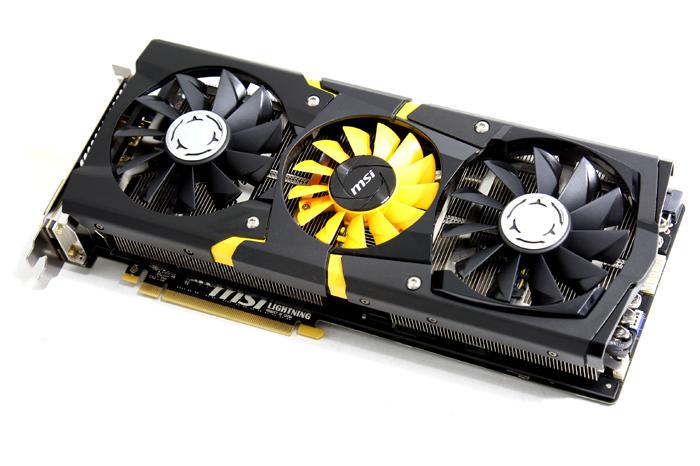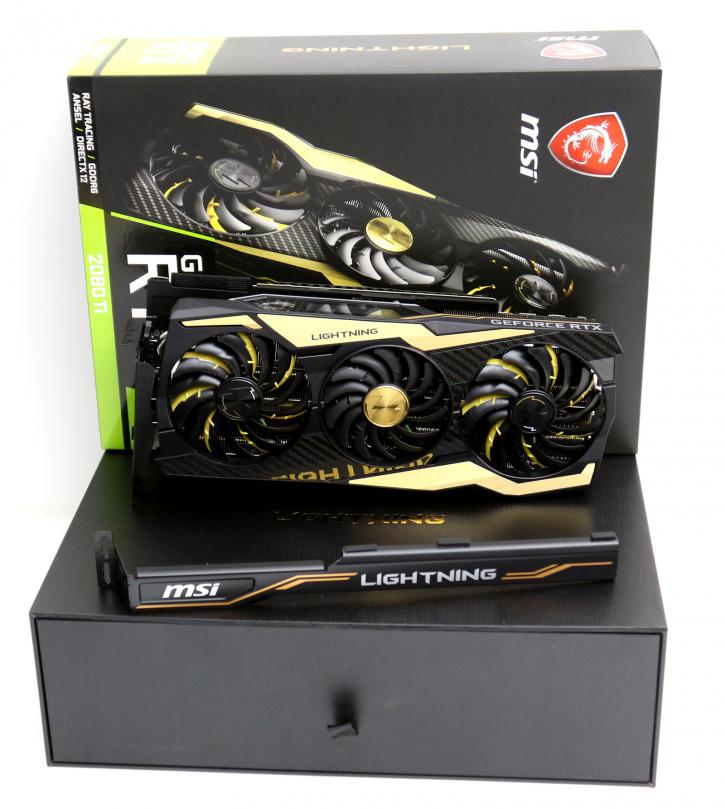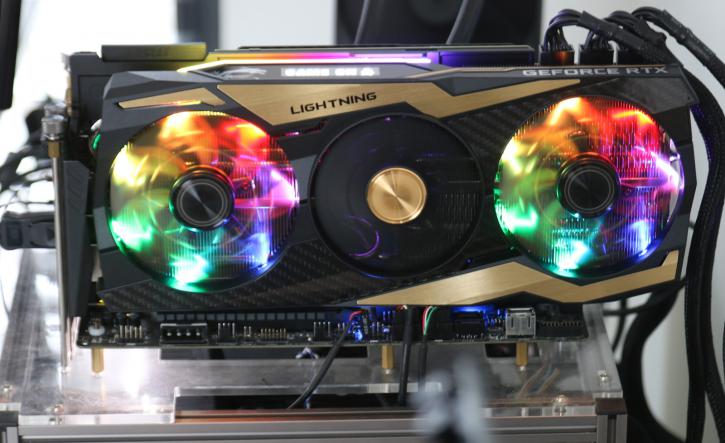Back to the Future
MSI to unveil 10th Anniversary GeForce RTX 2080 Ti Lightning
But before that happens - A Trip Down memory lane
At Computex 2019 starting in a week or two, MSI will release a 10th Anniversary Lightning edition of their graphics cards. Ten years of releasing graphics card made for the more enthusiast crowd as well as overclockers., Beefed up VRM designs, supporting overclocking software that could push the card a bit more (even despite NVIDIA did not always like that), yeah it has been a wild ride.
Over the years MSI has done some crazy stuff with the Lightning editions, and I am proud to have been part of that process more or less as some past designs have been pushed by yours truly and in recent years of course together with Alex (Unwinder) we've done as much as we can to support the lightning cards as best as we can in Rivatuner / MSI Afterburner. Did you know that we supported the very first GTX 260 Lightning with Afterburner? That said, MSI Afterburner will have a little surprise ready once the 10th-anniversary edition card will be announced at Computex.
In this small article I figured it would be nice to have a peek at the Lightning cards released over the years, an see how extremely they have changed from an aesthetics point of view. A quick scan in my CMS database shows that we have reviewed a staggering Fifteen Lightning models ever since 2009. Logic assumes that would be 10 models, however, four of them have been based on an AMD Radeon cards, and ten have been NVIDIA products out of which the GTX 580 has seen two Lightning releases.
The Lightning editions have brought new innovations to the market the past 10 years that propagated into 'mainstream graphics cards as well. Think about huge leaps in thermal performance, like the first Twin Frozr cooler and custom MSI fan designs such as Propeller Blade and TORX. But more importantly, each Lightning card was painstakingly designed to push the limits of performance for the GPU, things like Triple Overvoltage and V-check points. Also, the aesthetics have changed so much, think about RGB Lightning and the new OLED display.
Looking at article/review statistics the most popular model has been the GeForce GTX 980 Ti Lightning, followed by the 780 Ti model and in third place the 1080 Ti model
- MSI GeForce RTX 2080 Ti Lightning
- MSI GeForce GTX 1080 Ti Lightning
- MSI GeForce GTX 980 Ti Lightning
- MSI Radeon R9-290X Lightning
- MSI GeForce GTX 780 Lightning
- MSI GeForce GTX 770 Lightning
- MSI GeForce GTX 680 Lightning
- MSI Radeon HD 7970 Lightning
- MSI GeForce GTX 580 Lightning Xtreme edition
- MSI GeForce GTX 580 Lightning
- MSI Radeon HD 6970 Lightning
- MSI GeForce GTX 480 Lightning
- MSI R5870 Lightning
- MSI N275GTX Lightning
- MSI GeForce N260GTX Lightning
In honor of the LIGHTNING series’ 10th Anniversary, a special edition of the GeForce RTX 2080 Ti LIGHTNING graphics card will be unveiled at Computex 2019. Do you still remember all of them?

2008 (review) - MSI GeForce N260GTX Lightning, which came with an (airforce panel / integrated touch OC panel). Pretty revolutionary was the metal cover with dual fans design and the use of 5 heatpipes was a first.

2009 (review) MSI N275GTX Lightning - The GPU Clock at that time: 700MHz with a Memory Clock: 2300MHz. V-Check Points were introduced here, as well as AfterBurner 1.0 offering Voltage/ Clock/ Fan Speed controls.

2010 (review) MSI R5870 Lightning - The First Radeon based lightning edition. It had 1440 Shader cores running 900 MHz.

2010 (review) MSI GeForce GTX 480 Lightning, it had a base 750 MHz clock and a separate shader domain clock at 1500 MHz. The GPU needed good cooling as these puppies ran HOT. It came with 12+3+1 phases, Copper MOS, Proadlizer capacitor. Here we reached the 9 cm TWIN FROZR III design.

2011 (review) MSI Radeon HD 6970 Lightning. Pre-clocked at 940 MHz, it was able to reach 1 GHz. Here we enter the GDDR5 era. Memory clock sat at an effective 5000 MHz.

2011 (review) MSI GeForce GTX 580 Lightning, it had a default 832 MHz core clock with the Shaders running towards 1664 MHz. It came with 1.5 GB of graphics memory running 4200 MHz. But wait for it ...

2011 (review) MSI GeForce GTX 580 Lightning Xtreme edition, the same year MSI released an Xtreme edition of the GTX 580 Lightning. A product that deliberately was created for Computex. Sharing the same clocks as the regular version, however, memory got bumped up towards 3 GB as well as applying the Twin Frozr III cooler for which the fan color would change as the card would get warmer. The series saw Dust Remover technology, basically reversing the fan to shake of dust.

When the card got warmer the center core of the fans would slowly change it's color to white, the whiter the core appears to be, the hotter the card will be.

2012 (review) MSI Radeon HD 7970 Lightning, a radical design change in looks, all yellow and black. A 3GB paired Tahiti XT GPU is under the hood here. The backside had a 'reactor cap' which held an extra small PCB, it hosts a battery of 8 tantalum capacitors. A separate LN2 BIOS opened up some nice tweaking options. Here we had 1070 MHz on the GPU core.

2012 (review) MSI GeForce GTX 680 Lightning, the same year MSI also released a similar looking GTX 680 based Lightning. The card's base clock frequency is set at 1110 MHz with a dynamic turbo that reached up-to 1167 MHz. here we reach 1536 shader processors. The GPU Reactor was introduced here.
2013 (review) MSI GeForce GTX 770 Lightning, The card is equipped with a GK104 GPU (Kepler) and came factory overclocked at 1150 MHz (Ref 1046) with a Boost clock of 1202 MHz (Ref 1085). The GTX 770 series memory clock has been kept at an effective data-rate of 7010 MHz.
2013 (review) MSI GeForce GTX 780 LIGHTNING, it had 2,304 shader cores and MSI went a bit bazerk here, a 780 Lightning had power 19-phases (16+2+1 phases). This is the 3GB model that comes factory clocked for you at 980 MHz with a dynamic Boost clock of 1033 MHz (Ref 900). This card was based on Triple Force Architecture – Pure Digital PWN / Tri-Frozr / Triple Voltage.
2014 (review) MSI Radeon R9-290X Lightning, the 2816 shader units ran a 1080 MHz core clock frequency, the memory was at 5000 MHz. It featured a 15+3+2 phase VRM. This was the last Radeon based Lightning we have ever seen, based on Radeon R9 290X / Hawaii XT.
2015 (review) MSI GeForce GTX 980 Ti Lightning, MSI took the Maxwell GPU and clocked its shaders at 1304 MHz range on its dynamic clock and the memory at 7.1 Gbps. It actually was the first zero frozr tech, where in idle the card became passively cooled.
2017 (review) MSI GeForce GTX 1080 Ti Lightning, Pascal architecture, 3584 shader processors (Boost frequency 1696 MHz) a special LN2 BIOS on the car, 10-layer PCB, 14 phases for GPU + 3 phases for memory. The card is powered by a whopping three 8-pin power connectors. Oh yes, and the first introduction to addressable RGB LEDs on this series was in 2017.
2019 (review) MSI GeForce RTX 2080 Ti Lightning, fitted with the TU102 GPU and 4352 active shader processors it runs at a boost of 1770 MHz tied to 11GB GDDR6 / 14.4 GHz effective data-rate, all readable on a top side OLED screen.
2019 (TBA) MSI GeForce RTX 2080 Ti Lightning 10th Anniversary edition. And that is where we end this overview of Lightning cards throughout the past ten years. We hope you enjoyed this little overview. At Computex, the 10th Anniversary edition will be announced.
Congratulations towards MSI are in order, not everybody was ever able to purchase a Lightning due to limited production runs and high cost, however, everybody knows them and have appreciated these cards for what they are, enthusiast class fun products.
Recommended Downloads
- MSI AfterBurner
- Sign up to receive a notification when we publish a new article
- Or go back to Guru3D's front page
12+3+1 phases, Copper MOTriple Force Architecture – Pure Digital PWN / Tri-Frozr / Triple Voltage, Proadlizer capacitor








